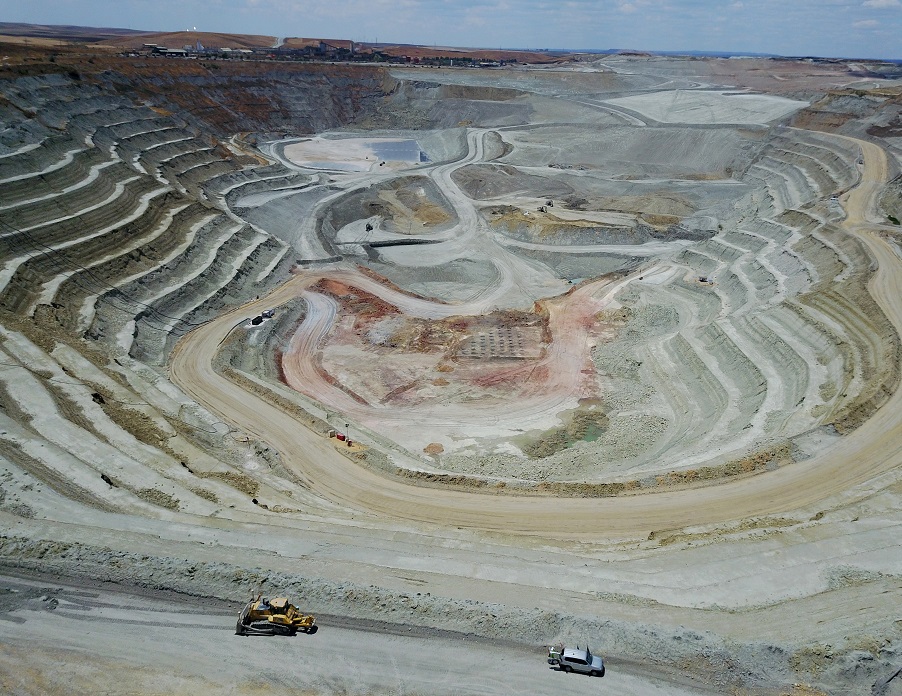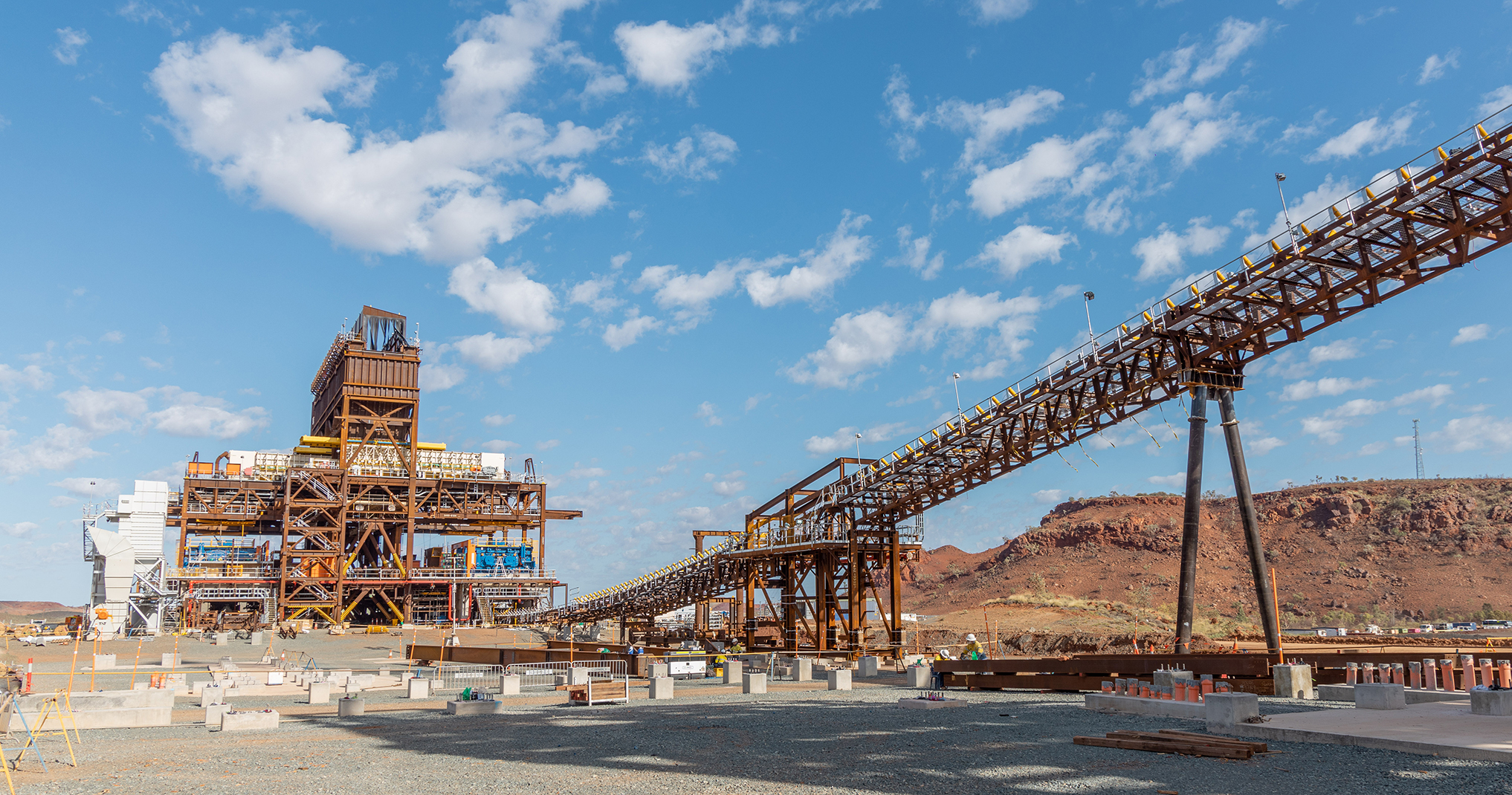
Mina Cobre Las Cruces: Leading Spain’s Mining Turnaround
Andalusia, a region in southern Spain, has a longer heritage than most in mining. As far back as about 3,500 BC, locals were mining copper in the area. Records show that when the Phonecians arrived in Spain in about 1,100 BC, they were taken aback by the abundance of copper that existed in Andalusia. When the Romans arrived, they dug mines as deep as 200 metres to exploit the area’s mineral riches.
The mining continues in the region through to the modern day with Mina Cobre Las Cruces, a mining-hydrometallurgical complex located in the municipalities of Gerena, Salteras and Guillena in Seville province. Cobre Las Cruces, owned by the Canadian mining firm First Quantum Minerals, is considered a benchmark for international mining today, most notably because its operates an open pit mine on the same site as a hydrometallurgical copper process plant.
In 2019, the mine commemorates 10 years of copper production, as well as 25 years since the discovery of its rich copper deposit in 1994. In a recent conversation with the mine’s CEO, Juan Pedro Soler, he told us: “An anniversary like this is always a time to look back and see how far we have come but also an opportunity to look to the future, to face the new projects and challenges ahead with optimism and confidence.”
The new Las Cruces future project is called PMR (Poly Metallurgical Refinery), with which CLC intends to extend the activity for at least 15 years. A highly innovative project in terms of technology that can open up a new horizon for the mining sector.
Key dates, figures and characteristics
Exploration on the area surrounding Cobre Las Cruces began in 1992, but production only began in 2009, giving some idea of the scale of work involved in bringing the mine to reality. Not to mention investment: Mr. Soler says: “The private investment is one of the largest – almost €1,100 Million to date– made in the last 30 year in Andalusia and it is also the largest international capital investment in a single project in the province of Seville.”
Cobre Las Cruces’ statistics provide justification for the scale of this investment; in 2018 alone, its output was 70,738 tonnes with a turnover of €398 million. In the ten years since it began production, its accumulated output has been over 586,000 tonnes of metal and nearly 11 million copper cathodes (sheets of 1m2). To give context to these figures, Mr. Soler says: “Lined up, these sheets would allow walking the distance between Andalusia and Beijing by walking on a path made of copper.”
However, perhaps the distinguishing features of Cobre Las Cruces are qualitative rather than quantitative. As Mr. Soler points out: “One of the main characteristics of the mine is its high grade (the percentage of copper per tonne of mineral) of between 5 and 6%. The average in the international copper mining sector does not go above 1%.”
Another qualitative feature, Mr. Soler notes, is the hydrometallurgical plant, which he calls: “the heart and key component of the complex.” The only plant of its kind in Europe, it has the ability to convert ore into sheets of copper using a process that has technical, economic and environmental benefits and indeed is considered by the international mining industry as clean technology for obtaining copper.
The copper cathodes produced by Cobre Las Cruces have been classed by the London Metal Exchange as grade A with 99.999% pure copper. While this level of purity is remarkable in the industry, even more remarkable is the time it takes to produce - Mr. Soler tells us that the process from mine to metal takes a mere 8 days. This level of efficiency is partly due to the plant’s use of hydrometallurgy rather than pyrometallurgy, eliminating the need to transport ore to offsite smelters and prevening, in turn, SO2 emissions.
Environmental Responsibility
The point about SO2 emissions is just one of the innovations that underpin the success of Cobre Las Cruces. From the outset, it has emphasized the importance of conducting its business in an environmentally progressive manner. For example, Mr. Soler says: “The use of transfer mining permits the open pit to be progressively restored from year 9 and the waste dumps to be replanted from day one. Productive use of the land for agricultural, forestry and social purposes has also been promoted after completion of the mining activity.”
The plant also innovates in water management, he tells us: “we manage several types of water and effluents. On the one hand, there is the treated urban wastewater pumped from the San Jeronimo sewage plant in Seville. In this case, a purification technology is used that enables major savings in water and recycling of this resource for industrial usage. On the other hand is the preservation, in quality and quantity, of the Niebla-Posadas aquifer that flows over the mineral deposit, guaranteed by means of the Dewatering-Reinjection System (DRS).”
Socioeconomic Impact
In an area where the path to employment was often agriculture or tourism, Cobre Las Cruces has generated new forms of opportunities for the likes of engineers, scientists and technicians. Mr. Soler says that it employs around 800 full-time employees and estimates that around 1,500 jobs are generated indirectly by the plant’s activities. Mr. Soler says: “more than 40% of these employees are from neighbouring municipalities.”
The emergence of a landmark project like Cobre Las Cruces has also had the effect of breathing new life into the mining industry in general. Mr. Soler says: “We have contributed to the revival of a strategic industrial sector in Andalusia and for the renovation of the image of mining. This is due to the solutions CLC apply to sensitive issues such as waste treatment, water resource management and progressive restoration.” In total, he estimates that more than 11,000 people are employed across Andalusia now in the mining sector.
Elsewhere, the creation of the Cobre Las Cruces Foundation in October 2010 was a decisive boost to involving the company in socioeconomic, cultural, sports participation and environmental actions. To date, the Cobre Las Cruces Foundation's social investment has been more than 9 million euros. More than 20,000 people have benefited from the activities promoted by the Foundation. Among its principal achievements have been the Municipal Development Plan, the CLC Development Plan for training of unemployed people and the “Five Nines” Award to the best local entrepreneurial project in the region.
Partners and Suppliers
Where partners and suppliers are concerned, Mr. Soler notes: “Cobre Las Cruces has a broad portfolio of 88 regular suppliers and contractors. Each month, more than 450 workers from these companies pass through CLC's doors to work on the mining complex, primarily in industrial, energy and service functions. Half of these companies come from the area closest to Las Cruces, the province of Seville and neighboring municipalities.” In fact, only about 5% of the company’s partners and suppliers are foreign.
Notable among its partners are Maxam and Flomay Quimica, two Spanish chemical industrial firms, Outotec, a Finnish mining technology firm, Gruas Lozano, a local firm specializing in mining transport and logistics, Cauchos San Diego, a local firm which installed many of the rubber belts used in the mines, Air Liquide, a French specialist in providing gases to underground mine operations and finally, EPSA International, the Spanish construction conglomerate.
Finally, a project of this scale almost always involves some local government interaction. Of this, Mr. Soler says: “The support provided by the Andalusian government to metal mining together with the latest technological innovations will confirm and consolidate Andalusia as an international leader in the sector.”
Onwards and Upwards
Cobre Las Cruces is in the final stage of its exploitation, with mining activity expected to end in the third quarter of 2020, but this doesn’t spell the end - just a new chapter. Lying underneath are secondary sulphides currently being mined are additional mineral resources of Primary Polymetallic Sulphides containing copper, zinc, lead and silver, opening an avenue for a new generation of mining in the region.
Cobre Las Cruces has a project to extend the life of the mine by 10-15 years, called PMR (Polymetallurgical Refinery) and will represent an investment of more than €400 million. The project is based on the most advanced technological concept known, called "From Mine to Metal". In this sense, it would be a metallurgical refinery of new design, pioneering and unique in the world. Today there is no other industrial plant on a global level that has these capabilities.
This project is also strategic for the entire Pyrite Belt, as the technology developed at Las Cruces has the capacity to be replicable anywhere in the Pyrite Belt or even in other locations with similar mineral resources. Given the versatility of the new hydrometallurgical plant, it would be possible to prolong its life indefinitely by feeding it with mineral or concentrates from other mines. In this way, the PMR project would not only shape the future of CLC, but could also open up a new development horizon for the mining sector as a whole.
The project is currently in the phase of obtaining permits from the administrations and represents a unique innovation in the field of mining: a new technology capable of exploiting a type of polymetallic mineral very abundant in the south of the Iberian Peninsula (the Pyrite Belt) but which until now was not profitable to treat due to its technical complexity.
The technologies at the new project will increase metal recovery, reduce energy, emissions, water and raw material consumption and optimize waste management. For a country which once lagged behind others in mining innovation, Spain is now a world leader. Cobre Las Cruces in the southern part of the country, is leading the charge in that turnaround.



 Mina Cobre Las Cruces - Sept 2019.pdf
Mina Cobre Las Cruces - Sept 2019.pdf










